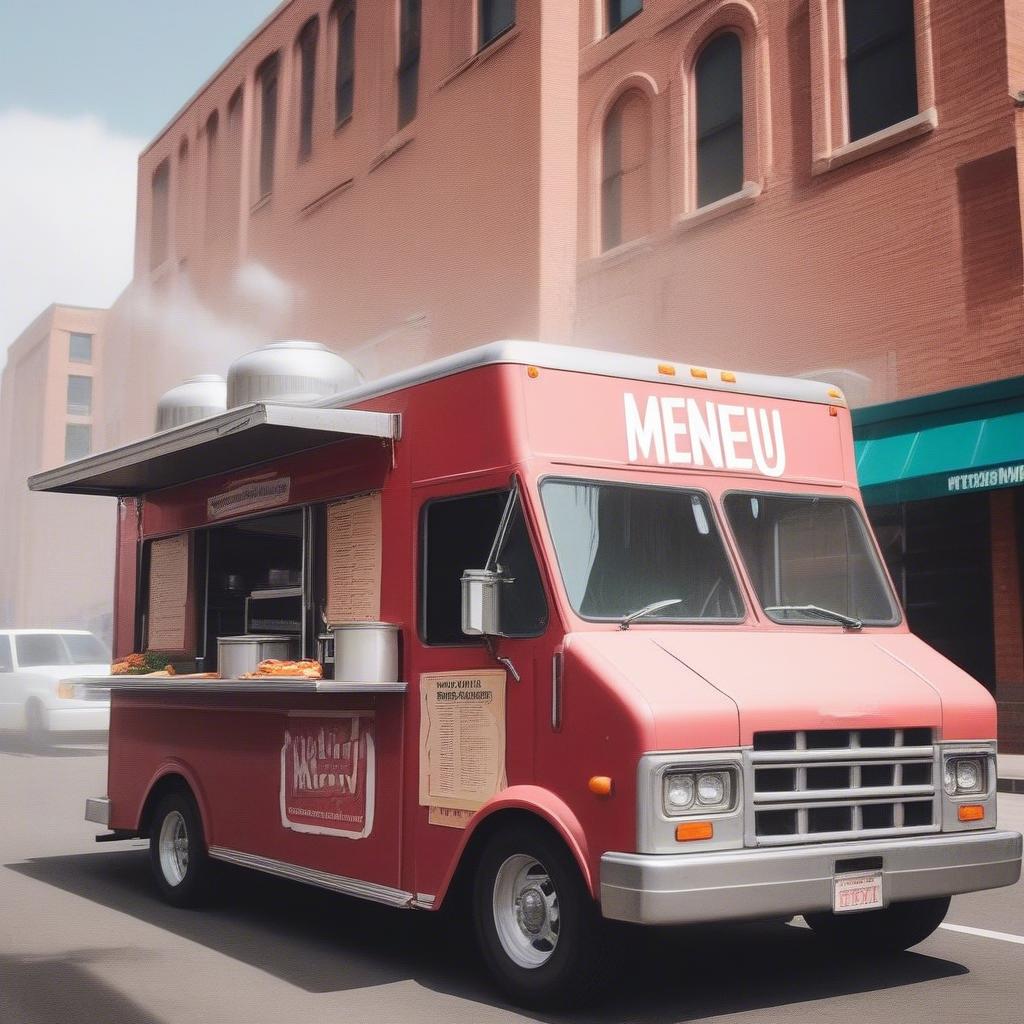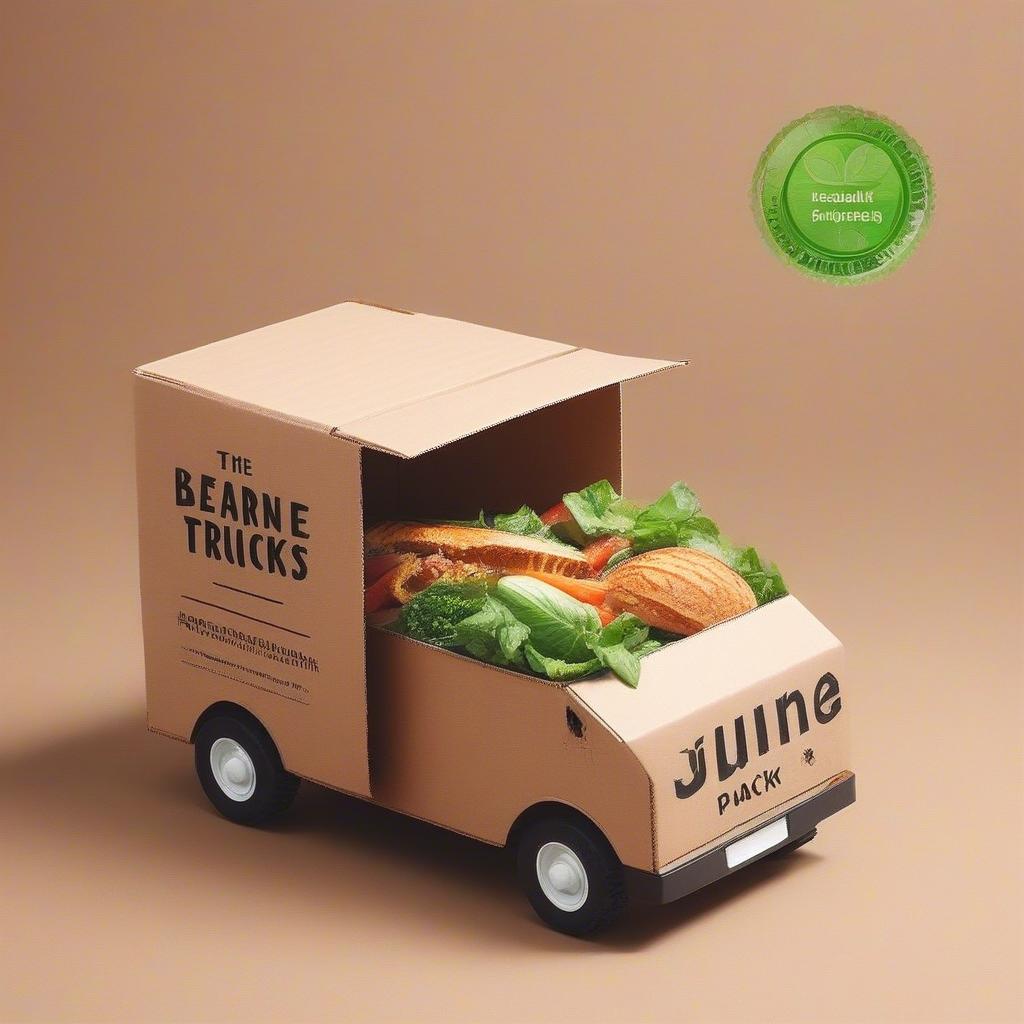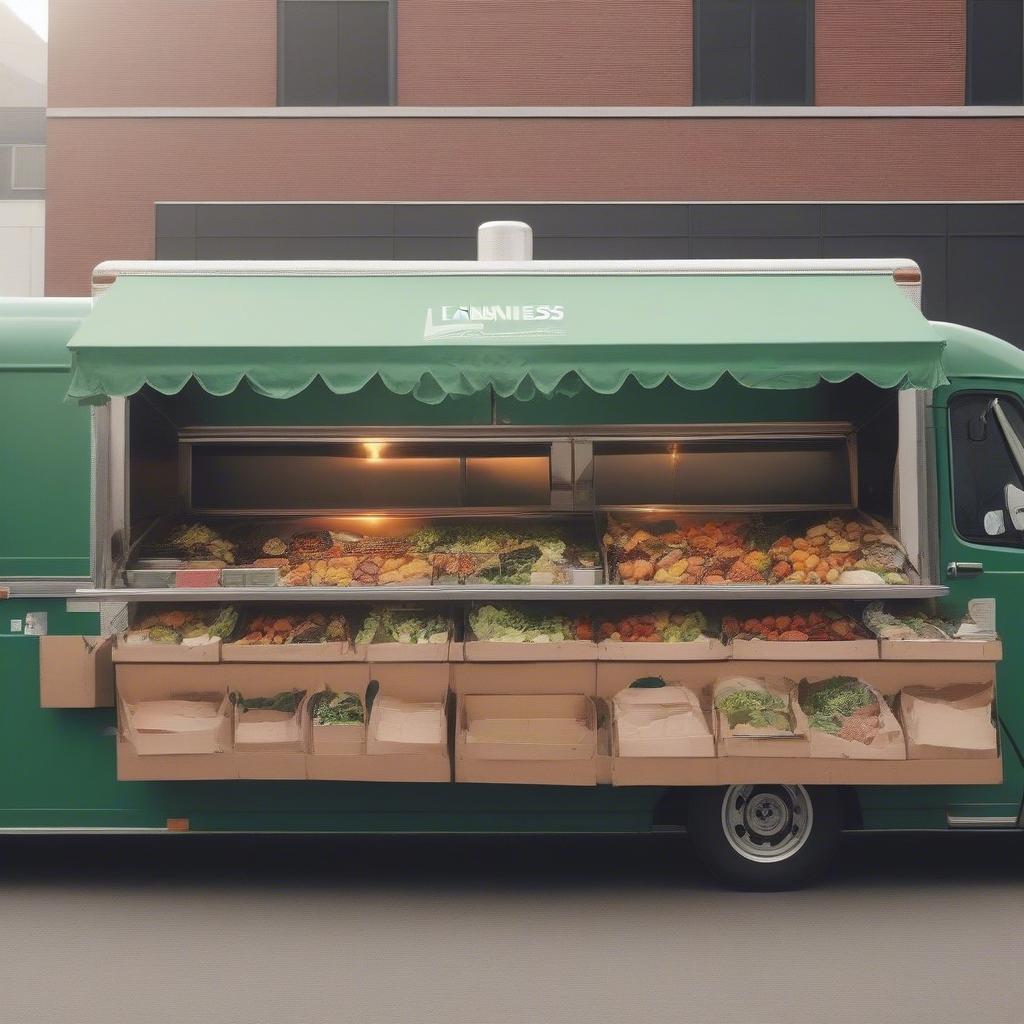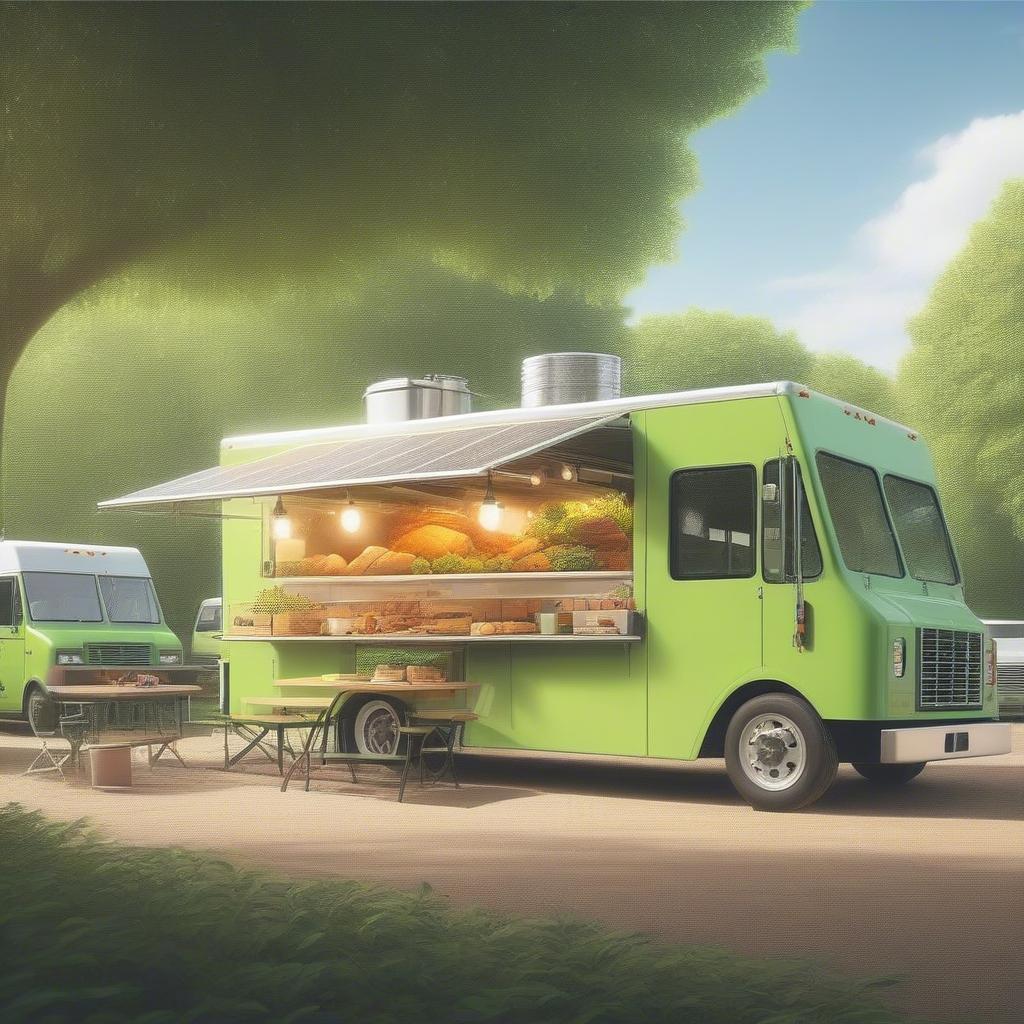
Let’s face it: your food truck menu is the heart and soul of your business. It’s the first impression you make, the silent salesperson, and the key to attracting and keeping loyal customers. But a poorly designed menu can be a recipe for disaster. You could be serving up incredible food, but if your menu is confusing, overpriced, or simply unappealing, you’ll struggle to thrive. This article dives deep into the common menu mistakes that plague food trucks, offering actionable food truck tips to help you create a mouthwatering menu that drives profits and customer satisfaction. We’ll also explore the often-overlooked design errors that can sabotage your best efforts.
The Pitfalls of a Poorly Planned Menu
A successful food truck hinges on a well-crafted menu that resonates with your target audience. But many food truck entrepreneurs stumble into common traps that can hinder their progress. Understanding these pitfalls is the first step towards menu mastery.
1. The “Everything But the Kitchen Sink” Menu
One of the biggest menu mistakes is offering too much. A sprawling menu with dozens of options can overwhelm customers and create operational chaos. It’s tempting to want to cater to everyone, but in reality, a focused menu is more effective.
- Why it’s a Mistake:
- Decision Fatigue: Too many choices lead to customer indecision, long lines, and lost sales.
- Inventory Nightmare: Maintaining a wide array of ingredients increases waste, storage challenges, and costs.
- Inconsistent Quality: Trying to do too much can lead to inconsistent execution and lower quality across the board.
- Slower Service: Preparing and plating a diverse menu slows down service and reduces customer throughput.
- Solution: Streamline your menu. Choose a niche and stick to it. Focus on a smaller selection of well-executed dishes that showcase your strengths.
2. Neglecting Your Target Audience
Your menu should be a reflection of your customer base. Ignoring their preferences and needs is a costly mistake. Failing to tailor your offerings can lead to low demand and wasted ingredients.
- Why it’s a Mistake:
- Irrelevant Offerings: Serving dishes that don’t appeal to your target market means you won’t attract customers.
- Missed Opportunities: Ignoring local tastes or dietary preferences can lead to missed sales and loyal customers.
- Wasted Investment: Investing in ingredients and recipes that don’t resonate with your customers is a waste of time and money.
- Solution: Conduct thorough market research. Understand who your ideal customers are, what they like, and what their needs and desires are. Consider location, demographics, and lifestyle when curating your menu.
3. Ignoring Pricing Strategies
Pricing your menu too high or too low can be equally detrimental. Overpricing can deter customers, while underpricing can cut into your profit margins. Striking the right balance is crucial for sustainability.
- Why it’s a Mistake:
- Repelling Customers: Prices that are too high for the perceived value will drive customers away.
- Undermining Profits: Setting prices too low means you won’t cover your costs and won’t achieve profitability.
- Inconsistent Perceptions: Inconsistent pricing strategies can damage your brand reputation and customer trust.
- Solution: Calculate your food costs accurately. Consider factors like ingredients, labor, overhead, and desired profit margins. Research competitor pricing and adjust accordingly. Consider offering combo meals or specials for value.
4. Lack of Clarity and Description
A menu is only effective if customers can easily understand it. Vague or confusing descriptions can lead to customer frustration and lost sales. Customers need to know exactly what they are ordering.
- Why it’s a Mistake:
- Customer Confusion: Unclear descriptions leave customers guessing and hesitant to order.
- Misaligned Expectations: When customers don’t know what to expect, they might be disappointed with their orders.
- Lost Sales: Confusion and hesitation often translate to missed sales opportunities.
- Solution: Use clear, concise, and descriptive language. Highlight key ingredients, flavors, and preparation methods. Consider adding photos or illustrations to visually represent your dishes.
5. Neglecting Dietary Needs and Preferences
In today’s health-conscious world, it’s important to cater to a variety of dietary needs. Failing to offer options for vegetarians, vegans, or those with food allergies can alienate a significant portion of your potential customer base.
- Why it’s a Mistake:
- Limited Customer Base: Ignoring dietary needs limits your market reach and potential profits.
- Missed Opportunities: Failing to provide options for all can lead to missed sales opportunities.
- Reputational Damage: Lack of inclusivity can damage your reputation and brand image.
- Solution: Offer at least one or two options for common dietary needs. Clearly label dishes that are vegetarian, vegan, gluten-free, etc.
6. Overlooking Seasonal Menus
Sticking with the same menu year-round can lead to customer fatigue. Utilizing seasonal ingredients can keep your menu fresh, exciting, and cost-effective.
- Why it’s a Mistake:
- Boredom: Customers may tire of the same menu over time, leading to a decline in patronage.
- Missed Opportunities: Not utilizing seasonal ingredients means you’re missing opportunities to showcase freshness and potentially lower costs.
- Loss of Excitement: Keeping a static menu can diminish excitement and the perceived value of your offerings.
- Solution: Create seasonal menus that feature fresh, locally sourced ingredients. Update your menu regularly to keep things interesting and exciting for your customers.
7. Poor Presentation and Design
Even the most delicious food can fall flat if your menu looks unprofessional or is difficult to read. Poor design errors can detract from the overall customer experience.
- Why it’s a Mistake:
- Unprofessional Image: A poorly designed menu projects a lack of professionalism and attention to detail.
- Difficult Readability: Small fonts, cluttered layouts, and poor color choices make it difficult for customers to browse and order.
- Lost Impressions: A visually unappealing menu can deter potential customers.
- Solution: Invest in professional menu design. Choose a font that is easy to read, use high-quality images, and create a layout that is both visually appealing and easy to navigate. Consider your brand identity.
Practical Food Truck Tips for Menu Success
Now that we’ve explored the common menu mistakes, let’s delve into some actionable food truck tips to help you craft a menu that wows customers and boosts your bottom line.
1. Focus, Focus, Focus
The golden rule of food truck menus is to keep it focused. Choose a niche, and become the best at it. Specialization allows you to perfect your craft, reduce inventory, and streamline operations.
- Actionable Tip: Start with 3-5 core items that you excel at. You can always add more over time, but ensure that those core items are consistently superb.
2. Market Research is King
Before finalizing your menu, conduct thorough market research. What’s popular in your area? What are your competitors serving? What are the dietary needs of your potential customers?
- Actionable Tip: Observe competitor trucks. Poll potential customers online and in person about their preferences. Gather data on local trends.
3. The Power of Pricing Psychology
Pricing isn’t just about covering costs; it’s about understanding how customers perceive value.
- Actionable Tip: Use odd pricing (e.g., $9.99 instead of $10) to make your prices seem lower. Consider value meals and combo options. Test different price points to optimize your profit margins.
4. Keep it Clear and Concise
Make your menu easy to read and understand. Use descriptive language, but avoid getting too wordy. Highlight key ingredients and flavors.
- Actionable Tip: Use strong action verbs (e.g., “grilled,” “roasted,” “sautéed”). Break long descriptions into bullet points. Use clear and easy to read fonts.
5. Cater to Dietary Needs (Without Going Overboard)
Offer a few options for vegetarian, vegan, and gluten-free customers. Don’t try to be everything to everyone, but show that you care.
- Actionable Tip: Clearly label menu items that meet specific dietary requirements. Consider offering a “build your own” option.
6. The Magic of Seasonal Menus
Utilize seasonal ingredients to keep your menu fresh and exciting. It also allows you to control costs by using items when they are at their peak.
- Actionable Tip: Create a rotating menu that changes every season or month. Partner with local farmers to get fresh, seasonal produce.
7. Invest in Professional Menu Design
A well-designed menu can elevate your brand and attract more customers. This is where you need to avoid design errors to ensure your menu is appealing.
- Actionable Tip: Hire a professional designer to create a visually appealing and easy-to-read menu. Invest in high-quality printing and materials. Ensure your menu reflects your brand identity.
8. The Test Kitchen is Your Friend
Before launching your menu, test it out on friends and family. Get feedback, and make adjustments as needed.
- Actionable Tip: Host a tasting party to gather feedback on taste, presentation, and portion sizes. Use the feedback to refine your recipes and menu.
9. Adapt and Evolve
Your menu isn’t set in stone. Be willing to adapt and evolve based on customer feedback, market trends, and seasonal availability.
- Actionable Tip: Regularly monitor sales data to identify what’s selling and what isn’t. Be open to changing items based on customer feedback and demand.
10. Leverage Visuals
People eat with their eyes, and a menu with mouth-watering photos can entice customers to make a purchase.
- Actionable Tip: Use high-quality photographs that accurately represent your menu items. Use a professional photographer if needed.
Addressing Common Design Errors
Beyond content, your menu’s design plays a significant role in its success. Overlooking the design elements is a major design error that can seriously impact your food truck’s bottom line. Here are some common mistakes and how to avoid them:
1. Tiny Font Sizes
Customers shouldn’t need a magnifying glass to read your menu. Small font sizes can be particularly challenging for older customers or those with visual impairments.
- Solution: Opt for font sizes that are large and legible. Test different font sizes to see what works best.
2. Overly Cluttered Layouts
A menu that’s cluttered with too much text and too many images can be overwhelming and difficult to navigate. This can lead to decision fatigue and lost sales.
- Solution: Use white space effectively. Organize your menu into clear sections, use simple and clear font sizes, and keep the layout uncluttered and easy on the eyes.
3. Poor Color Choices
Using colors that are too difficult to read or that clash with your brand can make your menu unappealing and confusing.
- Solution: Choose a color palette that is easy to read and that aligns with your brand identity. Ensure that text colors contrast with the background color for readability.
4. Inconsistent Branding
Your menu should be an extension of your brand identity. Inconsistent branding can make your food truck look unprofessional and untrustworthy.
- Solution: Use the same fonts, colors, and design elements on your menu as you do in all your marketing materials. This consistency helps to reinforce your brand.
5. Using Low-Quality Images
Grainy or blurry images can make your menu look cheap and unprofessional. Invest in high-quality photos of your food.
- Solution: Use high-resolution images that are well-lit and properly composed. Consider hiring a professional photographer.
6. Not Considering Placement
Think about where your menu will be displayed. Is it easy to see? Is it well-lit? Are customers able to read it from a distance?
- Solution: Position your menu at eye level, with proper lighting. Use a large format, or ensure it is visible and accessible to potential customers.
7. Neglecting Accessibility
Ensure your menu is accessible to all customers. This means choosing fonts that are easy to read, using high contrast colors, and offering options for those with visual impairments.
- Solution: Use large, clear fonts and high contrast colors. Consider offering a digital menu or a printed menu that can be easily read.
The Power of Learn Business: Your Partner in Menu Mastery
At Learn Business, we understand that creating a winning menu for your food truck is critical to your success. That’s why we offer a range of resources and tools specifically designed to support food truck owners like you. We help you avoid the pitfalls of common menu mistakes and provide you with the food truck tips and insights needed to create a menu that drives profits and satisfies customers.
- Menu Templates: We offer customizable menu templates that are professionally designed and easy to use. These templates will help you avoid common design errors and create a visually appealing menu.
- Pricing Calculators: Our pricing calculators help you accurately determine your food costs and set profitable prices for your menu items. This is crucial for maintaining profitability and avoiding underpricing or overpricing.
- Market Research Tools: We provide tools and resources to help you conduct thorough market research and understand the needs of your target audience.
- Expert Guidance: Our team of experienced business professionals provides guidance and support every step of the way. We’re here to answer your questions and provide you with the expert advice needed to succeed.
- Business Plan Support: We can assist you in developing a comprehensive business plan that includes a strong menu strategy.
- Marketing Assistance: We can also provide marketing guidance to help you promote your menu and attract more customers.
Conclusion: Your Menu, Your Success
Your food truck menu is more than just a list of items; it’s a powerful marketing tool that can drive success or lead to failure. By avoiding common menu mistakes, implementing practical food truck tips, and paying attention to design errors, you can create a menu that attracts customers, boosts sales, and builds a loyal following. Remember to keep it focused, research your market, price strategically, communicate clearly, consider dietary needs, and always keep an eye on seasonal possibilities. And don’t forget that Learn Business is here to support you every step of the way. By leveraging our tools, resources, and expert guidance, you can create a menu that sets your food truck up for success.



Leave a Reply